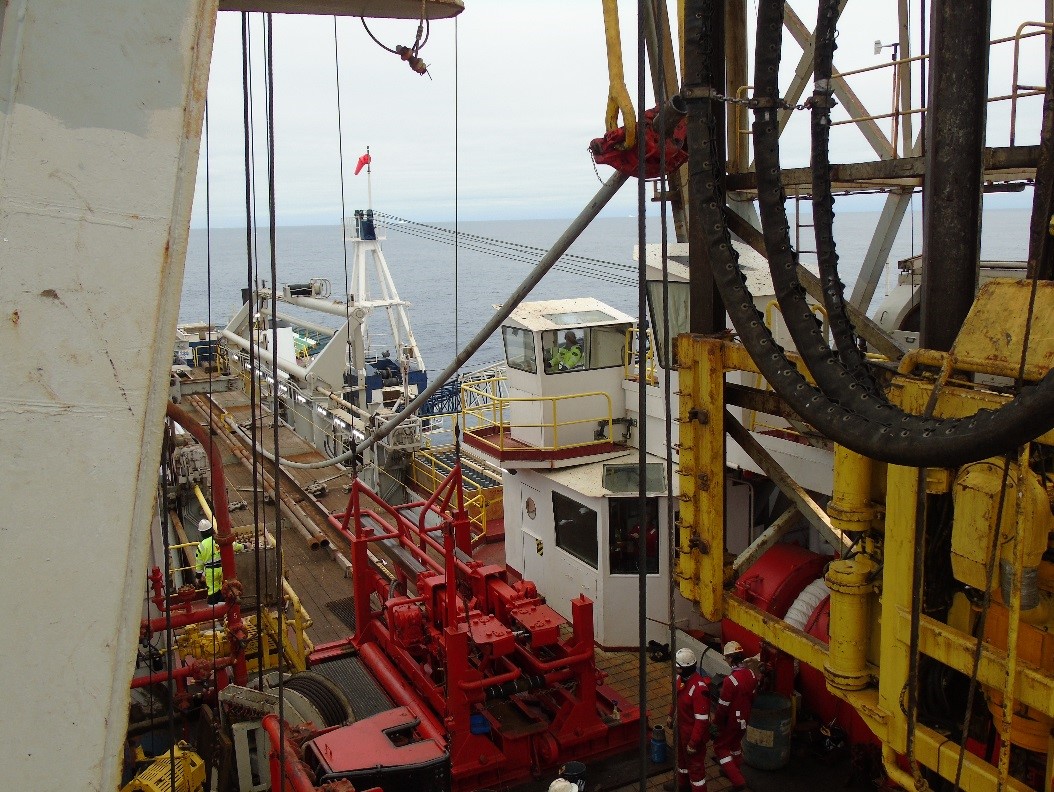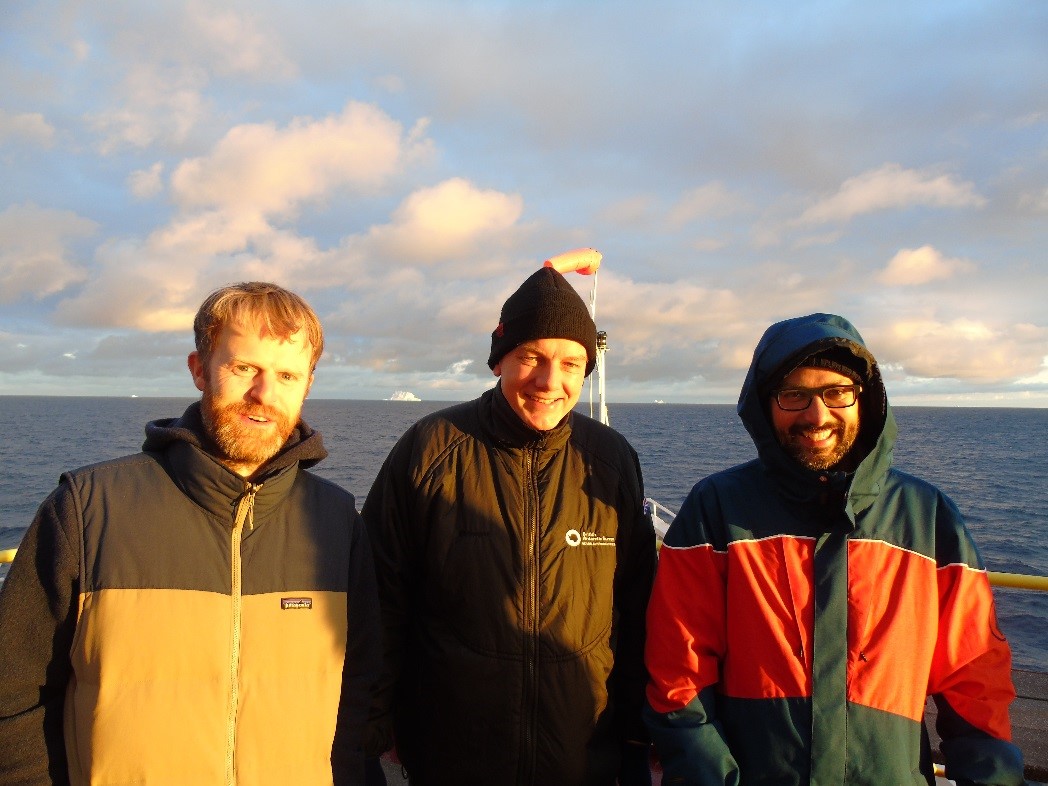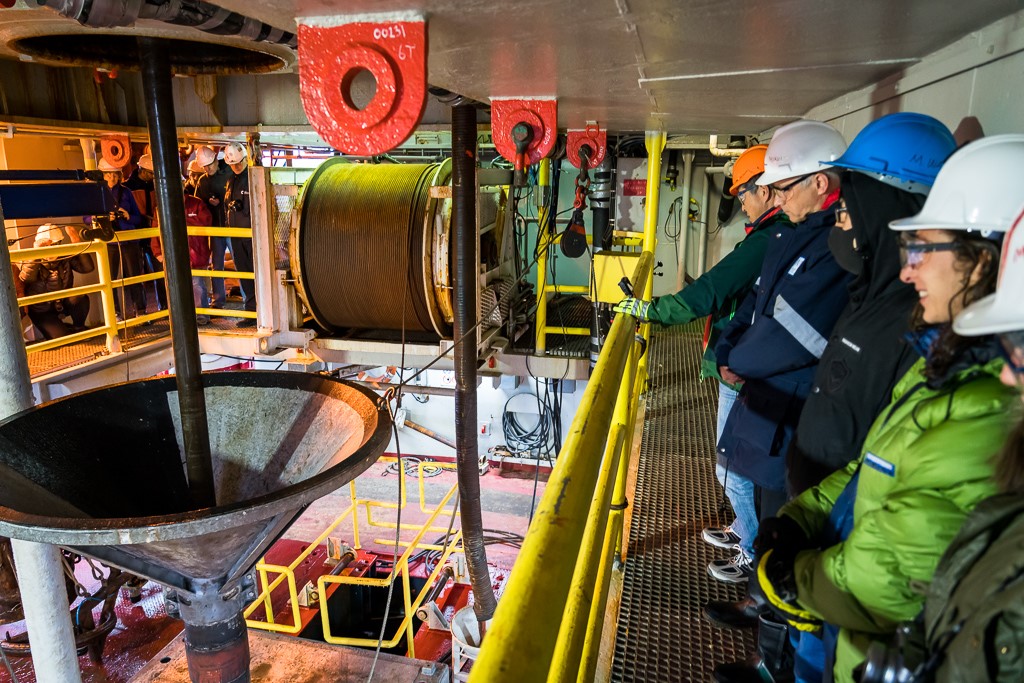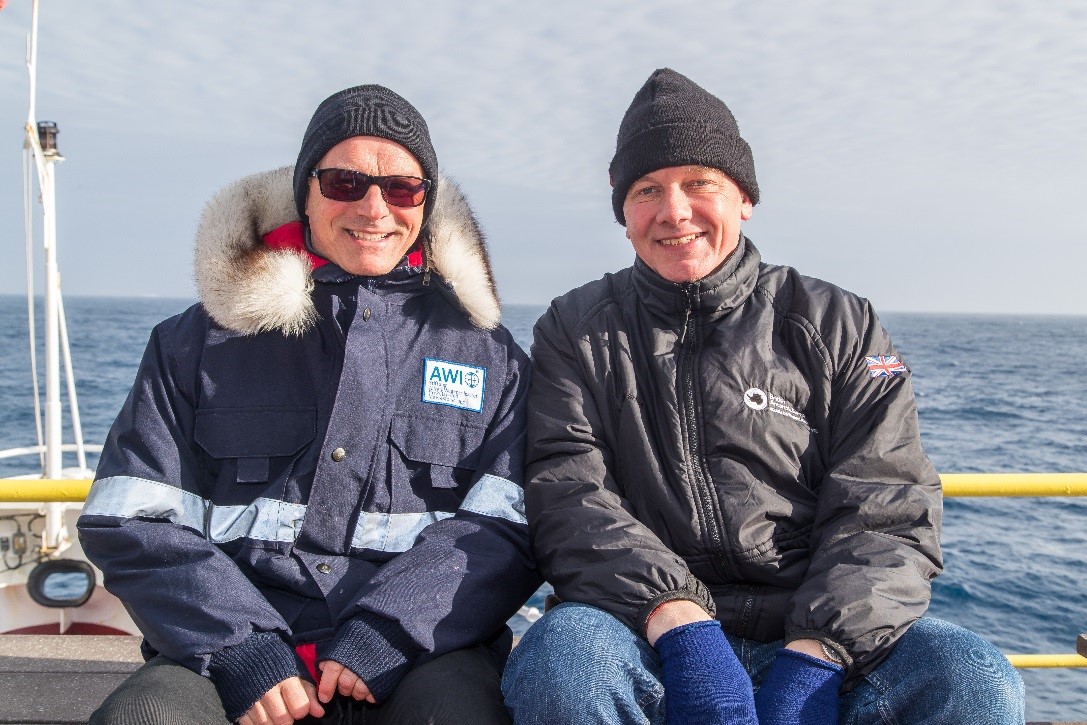A new drill site in the Amundsen Sea
27 March, 2019
Dr Claus-Dieter Hillenbrand is aboard the drill ship JOIDES Resolution as part of the 8-week International Ocean Discovery (IODP) Expedition 379. This is the final entry in a series of three blogs about the scientific research cruise (read the other instalments here). Read on to find out more about the final leg of the research cruise.
Time to move on
By the beginning of the last week in February, we had drilled 794 metres deep into the seafloor at our first Site U1532 on the continental rise in the Amundsen Sea. Here, on the edge of a sediment drift that we have named “Resolution Drift” after our ship, the JOIDES Resolution, we recovered a total of 101 cores from six neighbouring boreholes. Now, however, it was time to move on.

Originally, we had intended to stay a little longer to perform “down-hole logging” in our deepest hole; but the icebergs in the Amundsen Sea seemed to have a different idea and forced us to leave Site U1532 behind. Down-hole logging is the deployment of a string of probes into a borehole on a wireline. The probes hold a variety of sensors that “map” the formation of sediment layers continuously when being lowered down to the bottom of the hole (and when being pulled up again). They measure the physical properties of the layers, such as density, natural gamma radiation and content of magnetic particles. Some of these properties are also measured on the split halves of the sediment cores (find out more here).
Combining data from the physical core analysis with down-hole logging records allows us to identify – and fill – potential gaps in sediment recovery between cores and to determine the original thickness of the sediment layers in the deeper sections of the hole. Layers in these sections deep under the seafloor are highly compacted because of the weight of the overlying sediment column. Therefore, the sediments partly “decompress” and expand (on Exp379 up to 10%) as soon as they are exposed to much lower air pressure when the cores come on deck. In addition, down-hole logging enables us to conduct some unique in-situ measurements on the sediment and helps to integrate the data set obtained from a drill site with information about the broader environment recorded by seismic profiles. It was a pity that we were unable to carry out the down-hole logging at Site U1532 but at this stage any attempt to re-enter the drill string into the funnel, which we had installed at the last hole in order to quickly resume drilling after iceberg interruptions, was without a chance of success.

Choosing a new drill site
Unfortunately, the sea-ice cover closer to the continent meant we were unable to access some of our high priority sites for drilling. Colleagues on board the U.S. icebreaker Nathaniel B. Palmer were in the area conducting research on behalf of the International Thwaites Glacier Collaboration. Based on their direct observations, we decided to drill another site on the Resolution Drift. Even the first cores which we recovered from our new drill Site U1533 showed that the sediments were slightly different. They contained more diatoms than the sediments that we had collected from our first drill site. The high abundance and good preservation of these microfossils was an important finding because presence or absence of particular species in the sediments allowed micropaleontologists on board to constrain the ages of these sediments with high confidence. Post-cruise analysis of the composition of diatom species assemblages will enable them to reconstruct past surface water temperatures and sea-ice cover in the Amundsen Sea.
Passing icebergs continued to interrupt our progress at the new drill site, and occasionally we had to pull out the drill string to make way for them. However, each time after an iceberg had drifted away, we were able to return to the hole, re-enter the funnel that we had installed at the start of the drilling at Site U1533, and continue. Luckily, the JR seemed to attract not only icebergs but also whales, which were a much more welcome sight. As at Site U1532, these gentle giants of the ocean frequently visited us and swam a few times around our ship before heading off.

When we had drilled 382 meters into the seabed and collected 51 cores from four holes we decided to try and access one final site closer to the shelf. However, our plans changed when we learnt that a crew member on the JR had been injured. We stopped all operations and began to travel to a location where the individual could be transferred to receive appropriate medical care. The ship’s doctor would take care of the patient until we reached the destination identified. Luckily, the weather was on our side and we could steam towards the Chilean coast. The crew member was taken to shore by helicopter, and then transferred to hospital via an ambulance plane. Several hours later we were informed that the patient was feeling better and their recovery had begun. Everyone on board wishes them well and hope for a speedy recovery.
Unfortunately, as our expedition (Exp 379) was scheduled to end in just over a week we were unable to return to the Amundsen Sea and continue our research. Therefore, we sailed straight to Punta Arenas which concluded the cruise. There was some disappointment, of course, that we were unable to collect sediment cores from the Amundsen Sea Embayment shelf and that icebergs often forced us to pause when drilling on the Resolution Drift. However, we are grateful that eight years after we had submitted the first IODP proposal for drilling in the Amundsen Sea, we finally managed to collect the geological records which will help us to decipher the history of the West Antarctic Ice Sheet in this key region during the last few million years. In total, we drilled 2.73 km of seafloor, more than twice the height of Ben Nevis (the highest mountain in the UK). The post-cruise investigations of this highly valuable sediment will provide us with important clues about the dynamic behaviour of the West Antarctic Ice Sheet. All the scientists onboard look forward to this task and are immensely grateful to the captain, officers, crew, support staff and IODP personnel on board of JOIDES Resolution because without their professionalism, expertise and enthusiasm Exp379 would never have become a success.
